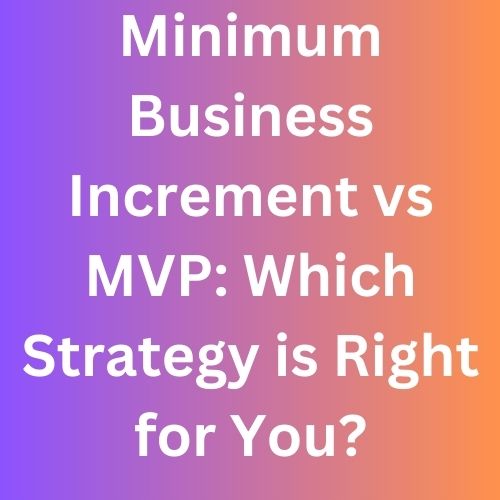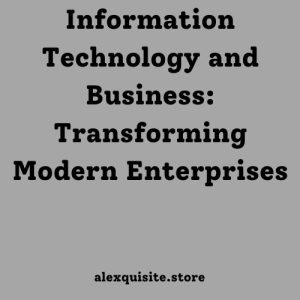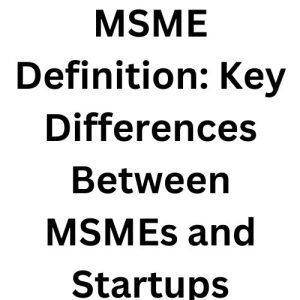
Minimum Business Increment vs MVP
Introduction to Minimum Business Increment vs MVP
Welcome to Hub World, we will be discussing about minimum business increment vs MVP and their definition and purpose, key characteristics, core components, key differences, focus and objectives, development approach, target audience, risk management, comparative analysis, development timeline and costs, customer feedback integration, business value generation, scalability and long term growth, and choosing the right strategy for your business.
Understanding MVP (Minimum Viable Product)
Definition and Purpose of MVP (Minimum Viable Product)
MVP (Minimum Viable Product) refers to the functionalities and few features of a simple product while viability is used to test the product ideas and gather early consumer feedback. It made it possible for customer feedback iteration based or introduction on rapid product market, and assumptions of confirmation. The market potential is evaluated, and potential problems are determined including creation of market driven product or increasing possibility of a success and lower risk failure.
Key characteristics of MVP (Minimum Viable Product)
Some of the key characteristics of MVP (Minimum Viable Product) refers to the functionalities and features necessary including looking for the right solution to the main market problem. The potential customers or early adopters’ feedback are gathered by MVP in order to develop and enhance the product also confirming the concepts and development quickly. The economical experimentation are enabled, and investment risk are reduced in order to produced minimal and fast resources.
Examples of successful MVPs
Some examples of MVPs are Dropbox which is validated and has secured funding platform for an MVP-stage cloud storage. Airbnb has evaluated demand to gathered input or update product and rentals vacation as an online marketplace. These are some of the successful MVPs for securing capital or proving ideas and drawing attention.
Exploring MBI (Minimum Business Increment)
Definition and goals of MBI (Minimum Business Increment)
MBI (Minimum Business Increment) refers to generating commercial value through the smallest work unit capable for managing and effectively prioritizing tasks in agile project management. Some of the goals are developing supporting iterative or waste cutting and value provided for stakeholders and clients. It facilitates quantifiable results to be created quickly or changing business needs and ability to gather feedback. Project are not completed in a single large release but prioritized when value are delivered in manageable bits.
Core components of MBI (Minimum Business Increment)
Some of the core components for MBI are business outcome is used to describe the strategic objectives of the business to align with the quantifiable and specific benefits. User experience is used to provide satisfying and positive experience to end users which is focused on customer satisfaction or accessibility and usability. Technological feasibility is used to determine if deployment is possible in MBI for limitations and technological capabilities to assess the organization present. The objectives and company goals are in consistent to adding value to structured approach which is provided through a system when everything is taken into account.
Real-world MBI examples.
Some of the real world MBI examples are patient genetic makeup to modify treatment for personalized medicine while data analysis and genetic testing are some of the effective treatment options for identifying illness risks. This approach are enhanced for cost-effectiveness and patient outcomes also each individual are optimized on recommendations and special offers to customer buying trends analyzes on specialized marketing campaigns for retail using MBI.
Minimum Business Increment vs MVP: Key Differences
Focus and objectives of Minimum Business Increment vs MVP
MVP refers to the functionality on absolute minimum for concepts evaluation and getting feedback from early user. While MBI focuses on beneficial features offered to clients to gain a competitive advantage and boost revenue. MVP ensures a strategy rapid development that is lean while MBI deals with the expansion of the company and creation of quantifiable value.
Development approach of Minimum Business Increment vs MVP
MVP prioritizes launching quickly and collecting user feedback on limited feature set including enabling revenue generation early which is crucial for the business elements first for guaranteeing the development. MBI prioritizes the business operations improvement or features that is beneficial for the development. The company objectives and specific priorities are in accordance with the choices made.
Target audience on Minimum Business Increment vs MVP
The target audience on MVP (Minimum Viable Product) is used as a quick market launch for the creation of a basic product version which are given to early adopters and exploration of new products on tech-savvy users. While MBI (Minimum Marketable Feature) is referred to as market penetration being increased due to the specific features of developed products which offers solution to specific issues for mainstream users and early adopters as their target audience. The needs of certain users and preferences are tailored on the product through the development team when understanding the target market.
Risk management on Minimum Business Increment vs MVP
The risk management in MVPs is more uncertain and focuses on validation of basic product through user feedback and testing of hypotheses either on market rejection or assessing of potential failure. While MBI ensures lowers risk and lowers market rejection when built on a solid foundation using a meticulous approach that can come from an extended time to market. The management and risk assessment proficient are contingent on value delivered and risk management on achieving optimal equilibrium and making informed decision.
Comparative Analysis: Minimum Business Increment vs MVP
Development timeline and costs of Minimum Business Increment vs MVP
Development timeline and costs in MVP entail lower cost and shorter time development of a simplified version of a product while MBI has each release with a ready market product including fully functional being delivered due to an incremental strategy. MBI costs more and takes longer development for the required work, planning, and considerable design.
Customer feedback integration of MVP vs MBI
Customer feedback integration on MVP is essential for enhancing the concepts of the original product to meet the needs of the clients through improvements and necessary changes. While MBI focus on subsequent iteration areas for continuous improvement as a tool of customer feedback integration. Their goals and timing may differ, but both are essential for the need to incorporating client feedback.
Business value generation of Minimum Business Increment vs MVP
The business value generation on MVP is used for testing rapid user feedback when new products are created with few features while MBI prioritizes adding value to small businesses for functional and critical features. MBI focuses more on instant value delivery while MVP involves getting feedback and testing from users. They have different aspects and are effective when both strategies are applied for the priorities and business objectives which are influenced by the decision.
Scalability and long-term vision of Minimum Business Increment vs MVP
The scalability and long term vision on MVP (Minimum Viable Product) is used to make the necessary changes or assess market demand and gather user feedback on a quick product launch including validating ideas quickly for businesses. While MBI is based on the long term strategy for gradual improvement using a strategic approach including scalability and long term growth.
Choosing the Right Strategy for Your Business
When to use MVP
MVP is used on the phases of product development and during the startup, which as limited features on a functional version of a product that is simple. It is essential to help reduce costly investment or reducing resource usage, or solicit customer feedback to determine the acceptance and viability of the product. The stakeholders or investors and customers use MVP has an initial traction tool for reducing risk in product development or gathering user feedback on the new concepts of product or service.
When to implement MBI
Implementing MBI is essential for feature introductions or testing of new products to get the market reaction based on the customer feedback, agility and flexibility. It ensure small attainable goals are achieved on economic downturns or during uncertainty while trying to achieve the larger goals on maintaining resources and risks minimization. The probability of success is increased and resources are maximized using these strategies to reduce risks.
Hybrid approaches of Minimum Business Increment vs MVP
The hybrid approach is used to join the MBI (Minimum Business Increment) and MVP (Minimum Viable Product) for continuous improvement and quick development of roadmap on a product. They generate revenue and increase customer happiness on balancing the business objectives and customer centricity. MVP get customer feedback with limited functionality on early product version that are developed and distributed while MBI adds unique value to the business on each product iteration.
Conclusion
In conclusion, MVP helps reduce the risks involve in losing traction and speed time to market on early product introduction while MBI focuses on value delivered and increase in growth for the extensive development cycles with more respond to the market demands. They are used for reducing risk management or money and save time also the goals or resources and corporate needs are influenced by the decisions. The available resources or the clients needs and analysis on the target market are some of the best outcome to achieve a good result.
READ MORE ON Minimum Business Increment vs MVP
SEE MORE ON MSMEs Definition: MSMEs and Startups Key Differences

